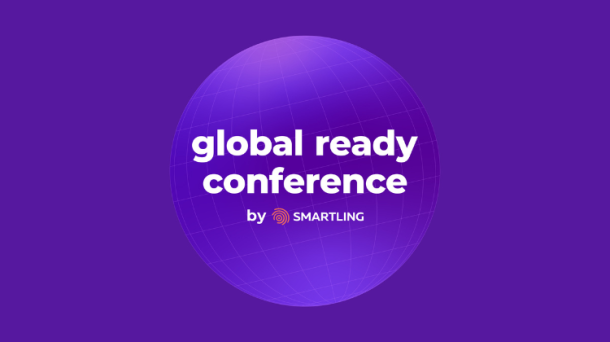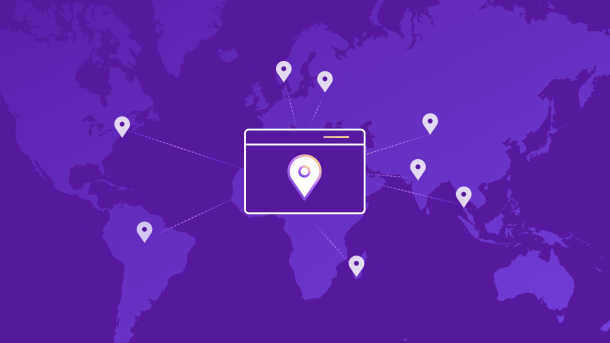Expanding into new markets requires content localization. In other words, it requires adapting your content to attract new customers in those markets—often by adjusting everything from language to SEO keywords to imagery. But this is no small investment, particularly if you have a vast cache of content, are rapidly expanding into several foreign markets, or are translating content into several new languages.
To make the best use of your resources and get the best return on investment possible, you need a content localization strategy. If you’re already overseeing a localization project, you probably have one—but how strong is it?
What are the benefits of a strong content localization strategy?
An effective strategy should do at least three things for your brand:
1. Expand your reach. You could lose 40% or more of your total addressable market (TAM) by not localizing the buying experience—your website content included. That TAM, of course, isn’t limited to the markets you’re currently in. It includes the ones you plan to expand into. By understanding the total amount of potential customers that exist in those regions, you can more easily gauge what percentage of them your localized content is reaching. You can also optimize your distribution strategy or make other adjustments to get that percentage as high as possible.
2. Promote increased positive engagement. According to Common Sense Advisory, 66% of consumers tolerate mixed languages on eos, although most want as much info as possible in their native languages. Their tolerance indicates an interest in what you have to say or offer. So, imagine how that interest would increase if you provided a fully localized user experience and customer experience. The more content you localize, the better your engagement metrics should look.
3. Impact your bottom line. Increased engagement fosters a sense of connection. Research shows that when consumers feel connected to a brand, nearly 80% choose it over competitors, and nearly 60% spend more. In other words, you should notice steady increases in sales, order values, and overall market share.
With the right localization strategy, you can enjoy these benefits. Lucidchart certainly did. With the help of Smartling’s end-to-end translation solution, the company achieved 200% year-over-year user base growth in Latin America alone. Not to mention that the brand racked up its first 125,000 localized product users in just four months.
How to develop a smart content localization strategy
Even if you already have a strategy, it’s worth revisiting what the strategy development process involves. It may help you identify opportunities to improve your current approach. Let’s start from the beginning.
1. Conduct thorough market research
Before entering a different market or starting to localize your content, you need to understand the linguistic and cultural nuances of that market.
- Is there enough interest in your products or services to make your efforts worthwhile?
- Would you be introducing a product or service (category) that’s relatively new to the target market? If so, what are the chances of successfully educating them and generating serious interest?
- Are there differences in what potential customers in the new market can pay vs. markets you’re already in?
- Are there differences in how people in your target region view or feel about the type of product or service you offer (e.g., necessity vs. nice-to-have)?
- What’s the most common local language or dialect? What are the differences between the source and target languages, and what translation challenges exist?
- How do terminology, phrasing, and search queries differ in the new market vs. your current ones?
- Are there any cultural differences or, more importantly, cultural sensitivities you need to be aware of?
- What global brands would you be competing against? What local competitors exist?
- How does your target market feel about your competitors? Do they trust these companies or are they looking for a better alternative?
These are just some of the questions you need answers to if you want to set your localization projects up for success.
2. Prioritize content to be localized
After market research, it’s time to decide what content to localize first. Your strategy will be most effective if you prioritize localizing your highest-impact content. This could include all of the following types of content and more:
- Landing pages
- Product pages
- Pricing pages and ecommerce checkout flows, including currencies
- FAQs and help documentation
- Emails
- Marketing or advertising campaign materials
Focus on the types of content that are most likely to get potential customers into the sales funnel or convert them. This will enable you to see results while you move ahead with localizing lower-priority content. (If you do it the other way around, you’ll have to wait longer to see a return on investment.)
Also, don’t forget to adapt legal content, such as privacy policies, terms of service, and similar pages early on.
3. Put localization resources in place
This step isn’t establishing a content localization process and choosing localization software and service providers. It’s just as much about figuring out how you can make the most of all these resources. Here are some important considerations for each:
- Process: Define what the steps in your workflow will be, what roles need to be filled, and what estimated turnaround times will be. Look into what parts of the process you automate and estimate how that will impact turnaround. Determine how much existing content you’d be localizing at once and how much new content would need to be adapted for different languages and cultures. Then, evaluate whether your planned process could sustain that volume of content and pace.
- __Service providers:__ Besides offering support in the different languages you need, you also want a vendor with well-defined quality assurance (QA) processes and a responsive customer support team. Ideally, they’ll also have industry expertise and access to experts in the local market to assist with QA. It’s also smart to choose a localization service provider capable of scaling as your needs change. You may even want a provider who can take [localization project management](https://www.smartling.com/resources/101/localization-project-managers-the-glue-of-the-localization-process/) off your hands completely. In that case, [managed services](https://www.smartling.com/why-managed-services/) would be worth looking into. Not only would account administration, project management, content management, and resource management be taken care of, but you’d also have access to white-glove support and training. That’s all your bases covered!
- __Software:__ Your goal is to save time and money without compromising on quality. Research each software’s ease of implementation, ease of use, available integrations, as well as automation and quality assurance features. This will help you determine which software is worth the cost.
Take, for instance, our translation proxy—the Global Delivery Network (GDN). Once configured, it automatically pulls new or updated website content into Smartling for authorization and translation. The translated content can then be delivered instantly to site visitors in their native languages. It’s hands-down one of the simplest and fastest ways to deploy multilingual, localized content. Additionally, our larger translation management system (TMS) has consistently been customers’ #1 choice for enterprise translation management because of the outcomes customers achieve with it: 60% reduction of translation costs Automation of up to 90% of translation tasks 53% faster time to market Especially when combined Smartling Language Services, which include like specialized translation, international search engine optimization, and localization testing, you can be confident in the execution of your strategy.
How to measure your strategy’s success (and why it’s important)
You can make informed decisions about what adjustments to your strategy will produce better outcomes. But don’t forget to track the impact of those changes to confirm whether or not they’re working. There are several metrics and key performance indicators (KPIs) worth paying attention to:
- Traffic from visitors within each of your new target markets
- Rankings and click-through rates (CTR) in local search results
- Engagement rates
- Conversion rates
- Sentiment among ideal customers in international markets (e.g., as expressed on social media, in on-site chats, etc.)
- The number and type of support requests received before and after localization efforts
- Cost of localization software and services vs. time or cost savings and revenue generated from localized content
As your goals evolve over time, periodically double-check that the metrics you’re tracking link to those objectives. For example, if you’re introducing a product category that’s not common in a foreign market you’ll be entering, your initial goals will center on generating awareness, promoting positive sentiment among potential leads, and gradually increasing engagement. But, after a while, it’d be more important to track metrics like conversion rate.
And what about quantifying the value of localization software use? Ideally, they should have advanced analytics features, as Smartling’s translation management system does. This would allow you to keep tabs on translation quality, as well as cost estimates, cost savings, workflow velocity, and so on.
To get a peek at these analytics and other helpful features within the TMS, watch our quick, 5-minute demo. You’re welcome to reach out to our team afterward if you have any questions or would like a more in-depth, personalized walkthrough.

.jpg)





